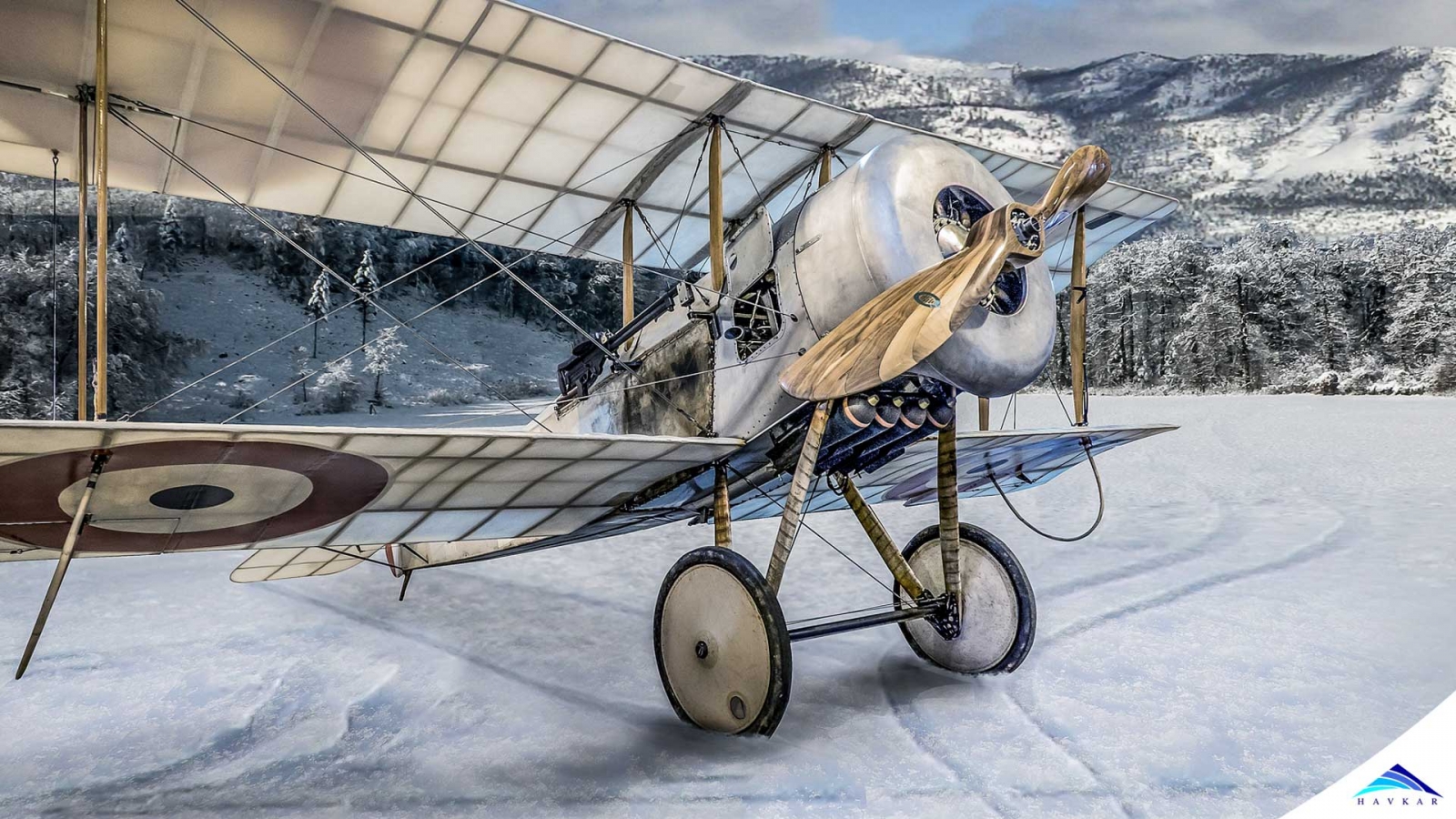
At the beginning of 1908, the Wright brothers were the top dogs in the industry, not only the United States Army announces the purchase of flying machines from them, but also a French syndicate. The conditions of the US military demanded two people to transport 64 km/h over a distance of 200 km. and paid $ 30,000 for the plane. During the test trials that were taking place at Fort Myer, Lt. Thoman Selfridge was unfortunately the first person killed in a powered aircraft crash and the first military aviation casualty.The aircraft was a standard Wright Model Type A and its propeller broke and caused a crash from an altitude of 75 feet (23 meters). Orville Wright also suffered bad injuries during the crash. However he kept his vow to his father to never fly with his brother and after recovery he continued the new family business.
Despite the incident, the machine reached altitudes of 100 meters and flight times of more than 2 hours at speeds of over 55 km/h. In the following year, in 1909, Orville Wright demonstrated the machine for the first time in Berlin on the Tempelhof field and founded a flight school.
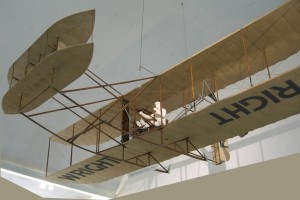
The only surviving Wright Standard Type A displayed at Tempelhof, Germany
The machine was a duck-type aircraft with rear rudder. The control of the roll axis was done by wing twisting the wing ends. The load-bearing structure of the aircraft consisted of steel pipe and spruce wood. The wings and tail panels were covered with fabric, which contributed to the stability of the construction. The water-cooled four-cylinder engine of its own production drove over chains two large propellers, which were designed for thrust. The aircraft was started by a rail; the chassis consisted of two skids. The two persons sat on a seat of the lower wing next to each other on the left side. To the right of the centre was the engine.
Technical Specifications:
|
Engine: 1 x water-cooled inline four-cylinder with 40 hp
Span: 11.2 m
Length: 8.9 m
Height: 2.5 m
Weight: 334 kg |
|
The Royal Army on the other hand showed interested aeronautical devices such as balloons or kites for surveillance and recognisance. However in 1906, an inventor named Samuel Franklin Cody received officer status and was appointed chief engineer in Farnborough for his achievements in flying military kites.
On October 16, 1908 Cody took the responsibility for the British Army aircraft number 1 and flew without the permission of the army. He performed the first powered flight in England and won numerous awards in the aftermath.
But when he crashed his plane, the army ended his contract and dismissed him for damaging state property. In 1912, he won a British army competition with a machine built from two crashed aircraft. On the 7th of August 1913, Cody and his passengers died during the flight of his last invention, a seaplane, over Laffan's Plain (Adlershot), when it broke apart in the air.
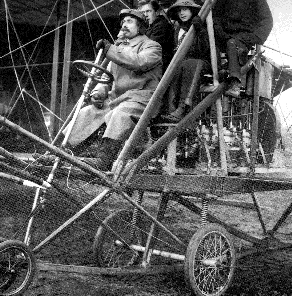
Samuel Franklin Cody flying in the front flight instructor position at the time, ca 1909
Technical Specifications:
|
Engine: 1 x Antoinette with 50 hp
Span: 15.85 m
Length: 11.73 m
Height: 3.96 m
Weight: 1338 kg |
|
In 1908, Louis Blériot designed his most successful model, the Blériot XI. Previously, the ambitious French aviation pioneer spent nearly a decade investing all of its assets in the development of an operational aircraft. In 1909 he replaced the 23 hp engines with a 25 hp engine and set on June 26, 1909 a European flight record of 36 minutes and 55 seconds. A month later, he managed the flight over the English Channel and he became famous.
The consequence of this over flight would be a great demand for its aircraft. By the end of 1913 Blériot had already delivered 800 machines. In addition, there were numerous licensed buildings in Italy and Great Britain (Humber Company). However, Blériot, of the house of automobile manufacturer, the money urgently needed. His many elaborate experiments, his numerous aircraft constructions and his accidents had led him to the brink of bankruptcy.
At the beginning of the war, the Blériot was even used as a reconnaissance or artillery observation aircraft at short notice, because it offered the observer a good field of vision. 1915 but the Blériot XI were deducted from the front line service and served only as a training aircraft.
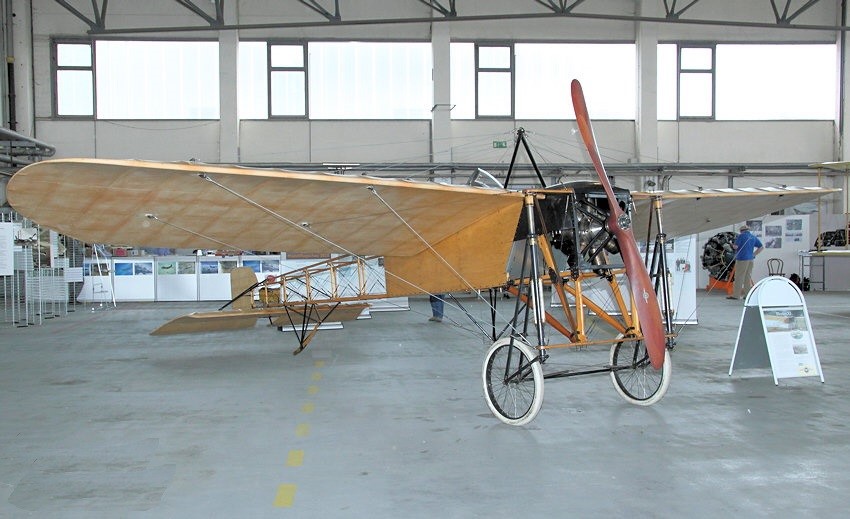
Blériot XI Single-seated plane from 1908 made of wood
Technical Specifications:
|
Engine: 1 x piston circulating engine
Span: 8.9 m
Length: 7.8 m
Height: 2.6 m
Empty Weight: about 260 kg
Maximum Take Off Weight: 360 kg |
|
However its success was tremendous, the French Blériot XI-2 was the first fighter plane to be procured by Switzerland.
At the beginning of the First World War, the plane was first and foremost an educational vehicle for military leaders. At an application as a plea was not initially thought. Although the crews had as a means of throwing off smaller bombs, which were not heavier than five or ten kilograms and without any target device freehand ejected showed little effect. As a suitable aircraft for carrying out bombing but until the middle of the war, the airship. Airships had simple targeting devices, with which the bombing could be optimized gradually.
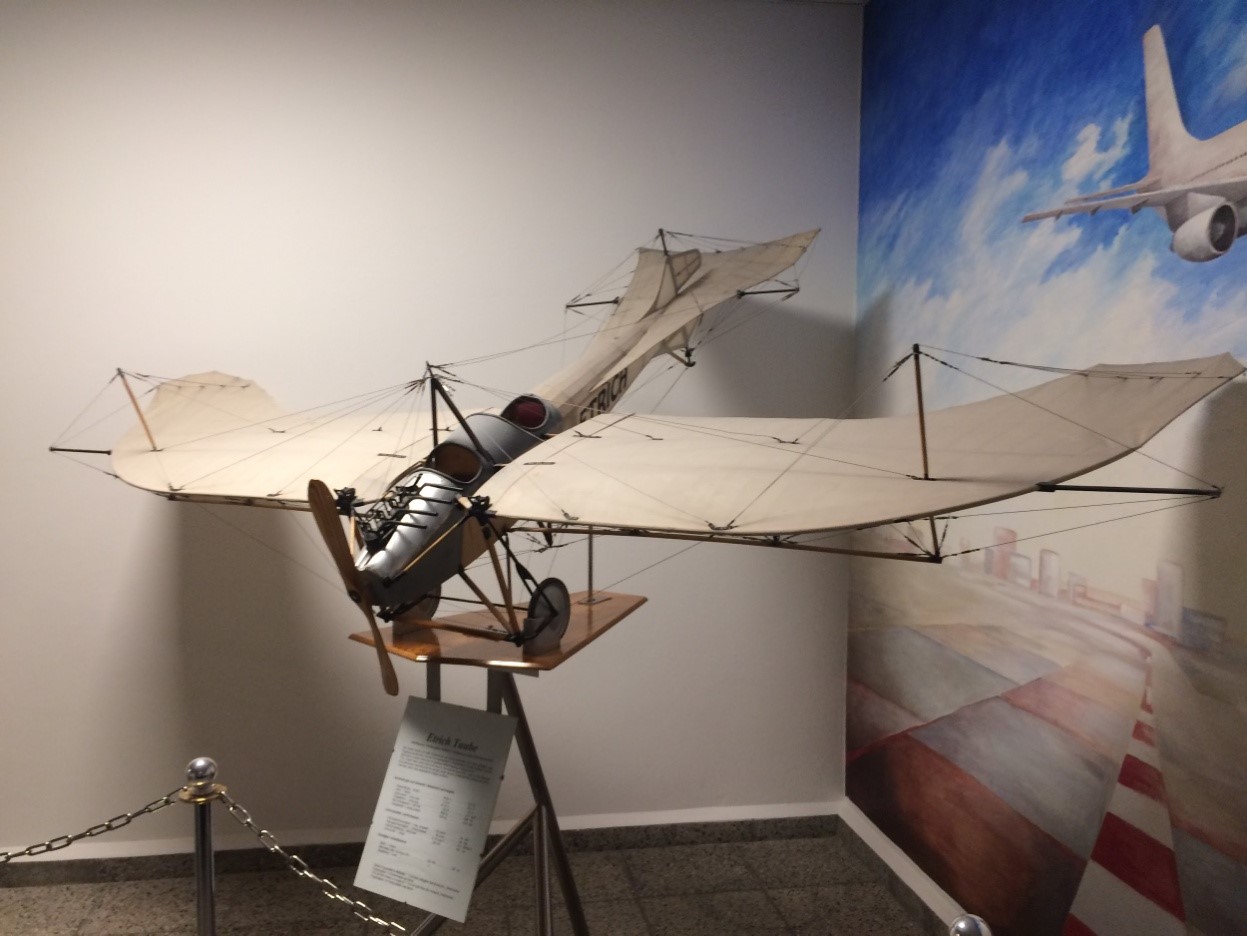
“Taube” aircraft Model on a scale of 1:5 displayed at the Lufthansa Flight Training Centre in Berlin, on loan from the museum “Historischer Flugzeugbau”, 2018
One of the first developments for the military was “Taube”, the first military aircraft to experience a mass production in Germany. It had a wing design inspired from the seeds of the Alsomitra macrocarpa tree, and not from a pigeon’s flight as the name translation would suggest. It was very popular before World War I and was also used by the air forces of Austria-Hungary and Italy. The Royal Flying Corps were operating at least one Taube in 1912. On November 1, 1911, Giulio Gavotti, an Italian aviator, made the first air bombing in the world, throwing a monopoly bomb from a Taube over the Ain Zara oasis in Libya. After the war began, it proved to be inferior to a combat plane and replaced by new and more efficient models.
Technical Specifications:
|
Engine: Mercedes or Argus AS I with 99 hp
Span: 14.35 m
Height: 3.2 m
Empty Weight: 600 kg
Maximum Take Off Weight: 860 kg |
|
Starting from 1909 various European countries started to acquire personnel with flight certificates and aircrafts such as Russia, Germany and Japan. The purpose was to create an air weapon that would dominate on land and over the sea. However the air industry or many countries was dependant on French parts and know-how, consequently by 1914, only France already had an air force with an organized fleet.
But when the war started it was still a long way to an aerial war. Many pilots knew about international flights and were more interested in the machines of the enemy than in shooting down each other. The first aerial battles were improvised with pistols. Only when it was possible to fire with machine guns synchronized by the own propeller circle, the history of the fighter aircraft began, which not only could shoot down balloons, zeppelins, reconnaissance and bomber planes, but also could take up the fight against other fighter aircraft.
All in all the attachment of the air force to every army hat not only a strategically effect by taking over tasks that were reserved for centuries for the cavalry, it also had a tactical role through expanding the boundaries of the battlefield more and more.